June Highlights
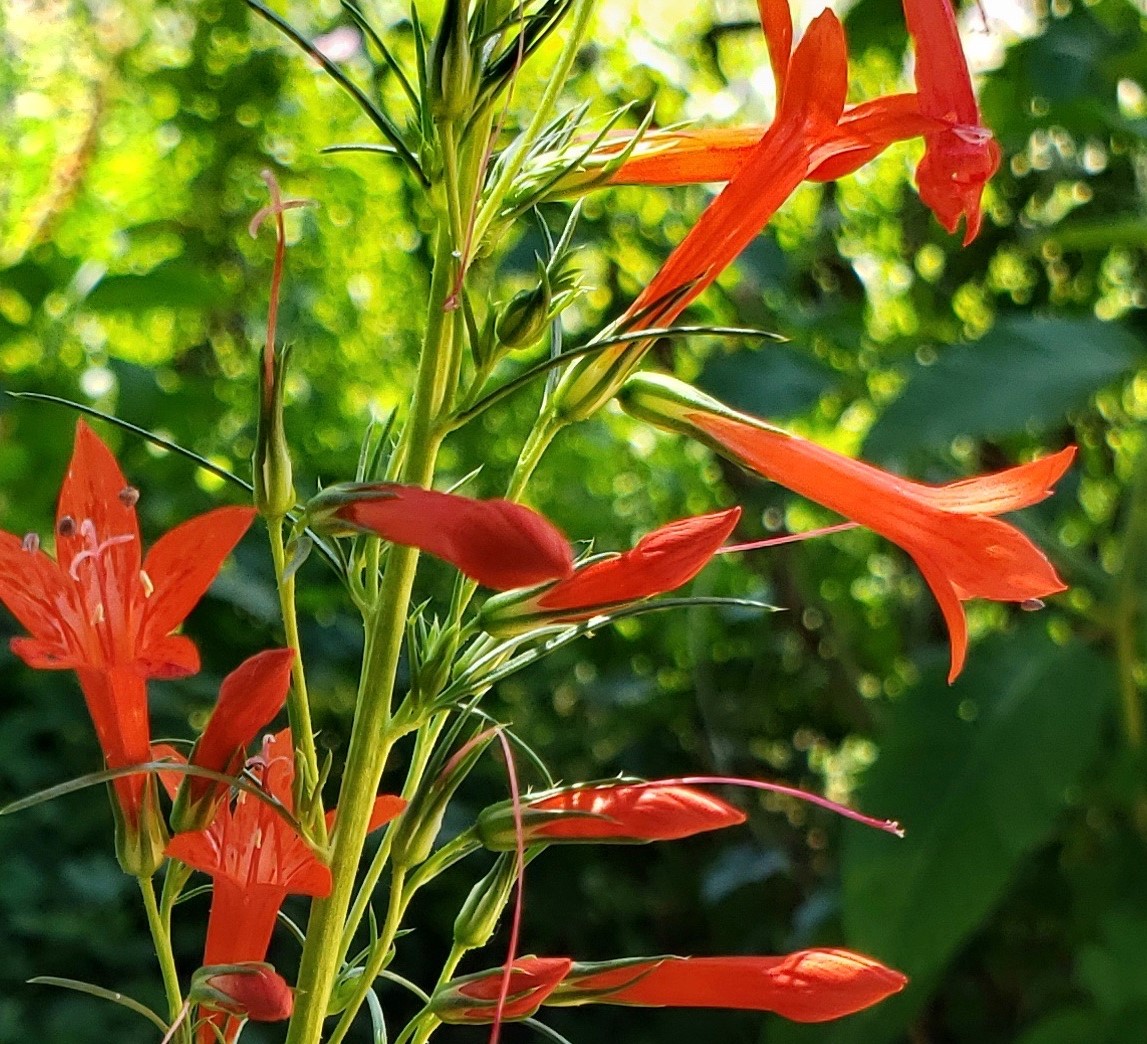
May through July STANDING CYPRESS reigns supreme in the park, often forming large colonies. The showy red tubular flowers are marked with orange or yellowish spots inside. Their blooming coincides with the flight of hummingbirds through Dallas.
FUN FACT: While many flowers blooming on spikes open from the bottom to the top, Standing Cypress flowers open from the tip of the stem downward.
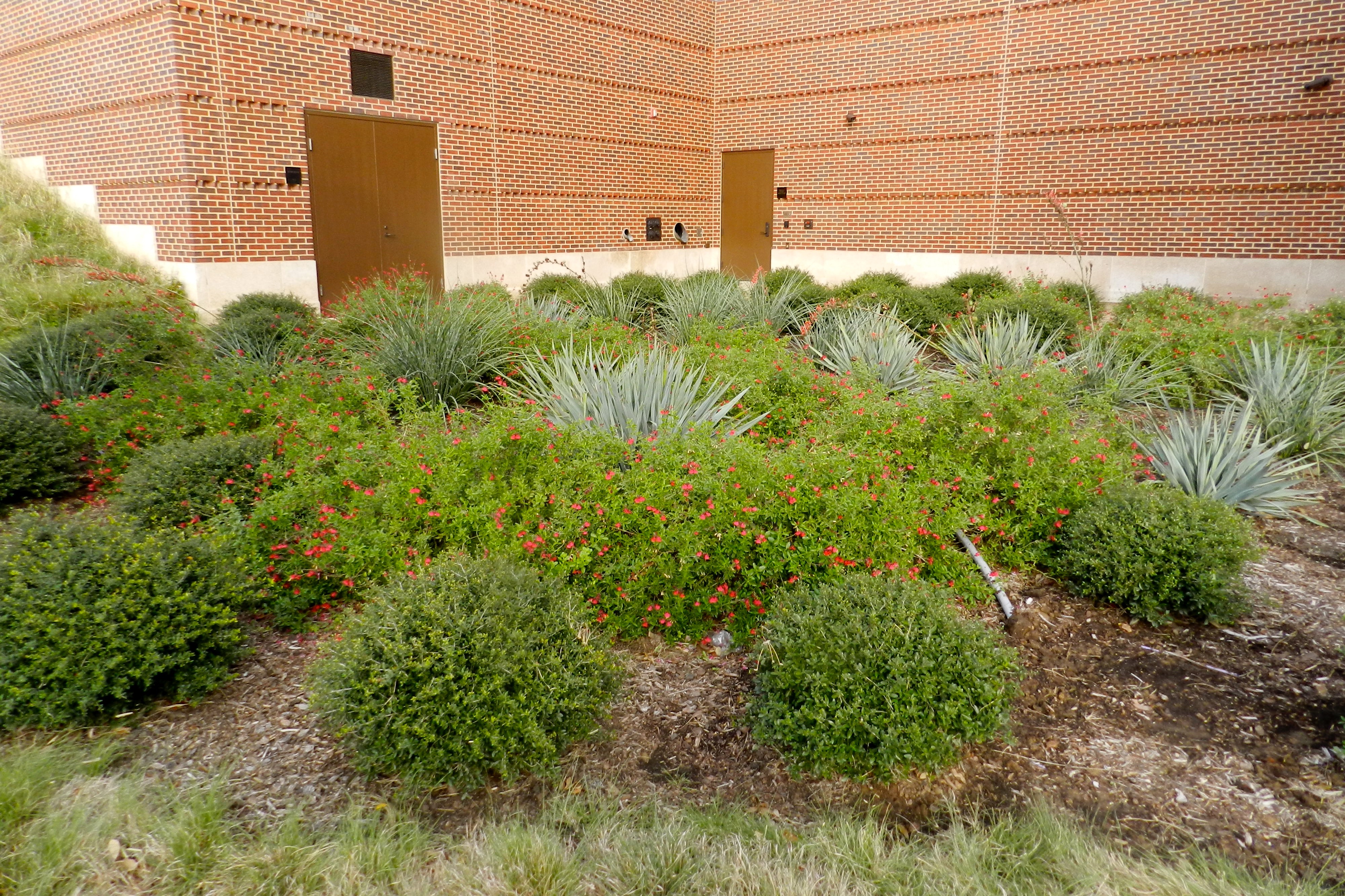
Most people think of wildflowers as growing sporadically, wild and untamed. On a walk through the park, one will pass a special bed of native shrubs, arranged in a FORMAL GARDEN DESIGN, that provide colorful blooms and food for hummingbirds and butterflies in three seasons. Dwarf yaupon hollies provide a framework and red Autumn Sage (blooming March-November) fills in the spaces surrounding spiky plant forms—Red yucca and white Texas Yucca (both spring-summer bloomers). A bonus is that all plants are also evergreen.
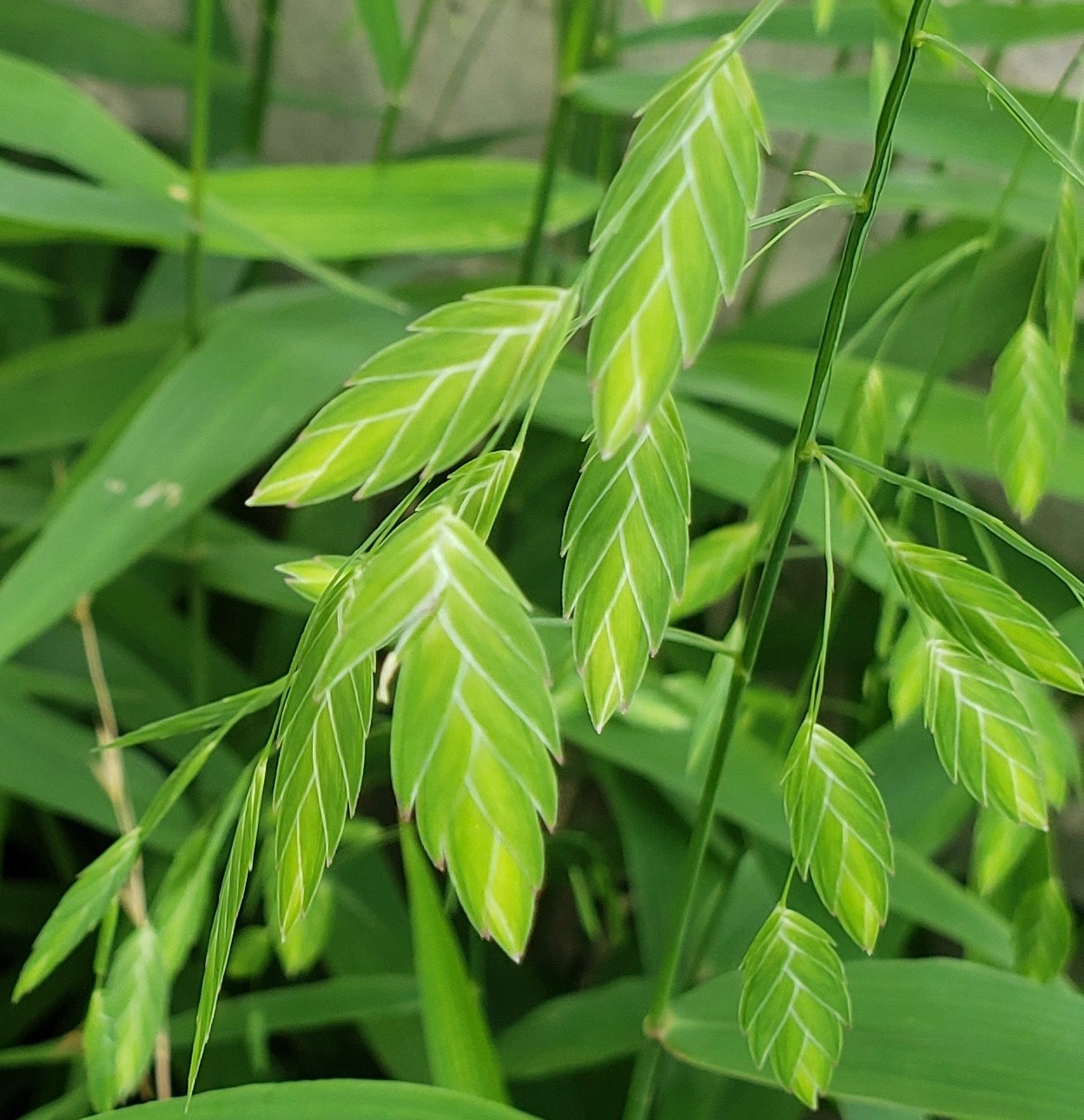
For deep shade in the home landscape, one cannot go wrong with INLAND SEA OATS. In fact, the leaves will turn yellow if it does not get adequate shade! This clump-forming perennial grass bears large drooping, oat-like flowers that hang from slender, arching branches. The seed stalks turn brown in fall, adding interest to dried arrangements.
FUN FACT: Inland Sea Oats serves as larval hosts for a variety of skipper butterflies.
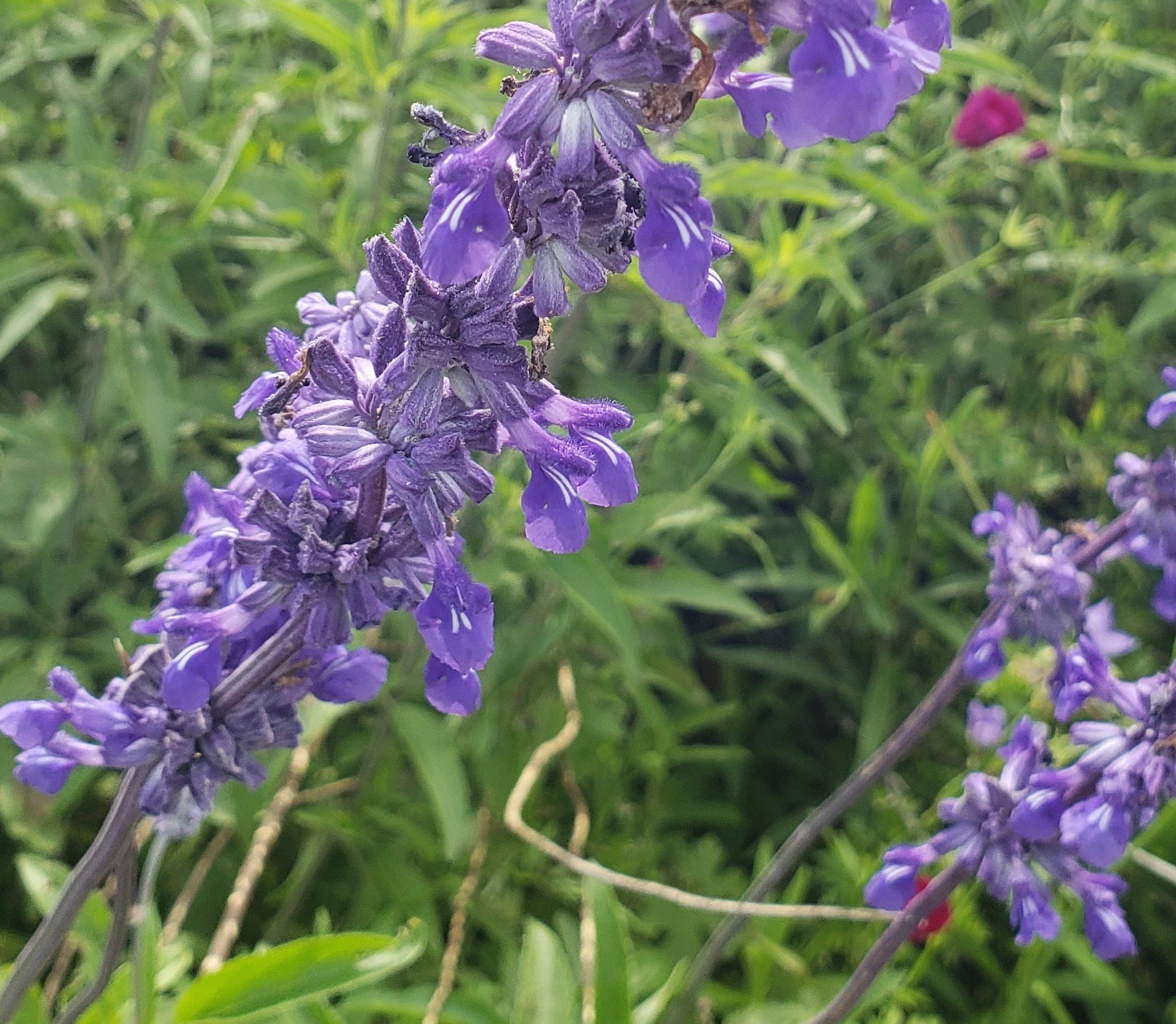
July Highlights
MEALY BLUE SAGE is a hardy perennial that grows from April-October, both upright and sprawling, forming mounds as wide as the plant is tall. Deemed Texas Superstars--for their low maintenance and heat, drought and humidity tolerance—the Henry (purple) and Augusta (white) varieties are commonly sold in nurseries.
FUN FACT: Horticulturist Greg Grant first discovered the Henry and Augusta varieties growing wild in an old Texas cemetery on the grave of the Duelbergs, and named them accordingly.
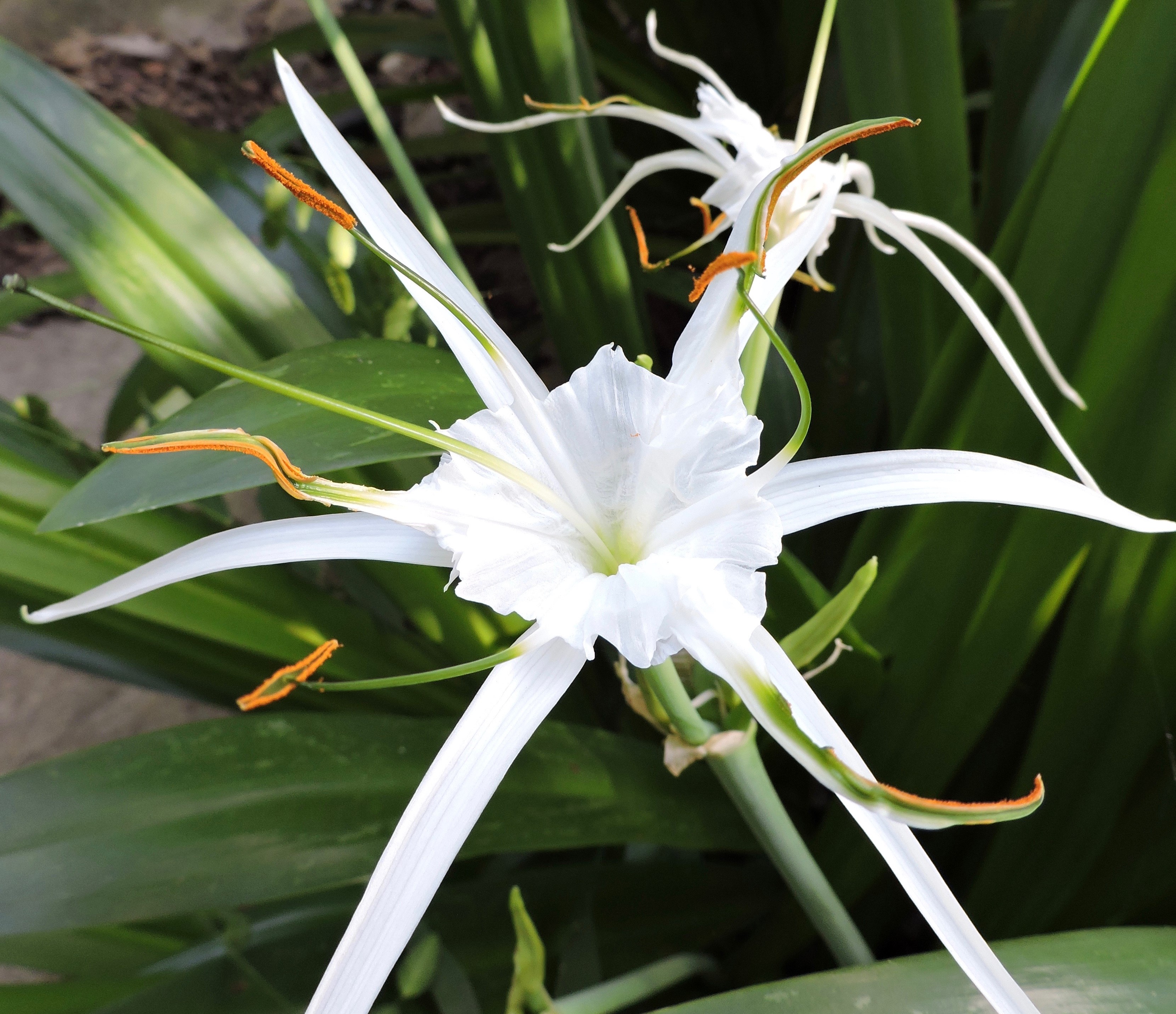
In July in the seep, one may catch the striking SPIDER LILY in bloom! It’s a true Texas native that grows in clumps with stems 1-3 feet high and flowers that span 7 inches across. The seep offers the perfect environment for this type of spider lily—partial sun and moist soil.
FUN FACT: Despite the name, it’s not a true lily but a member of the Amaryllis family.
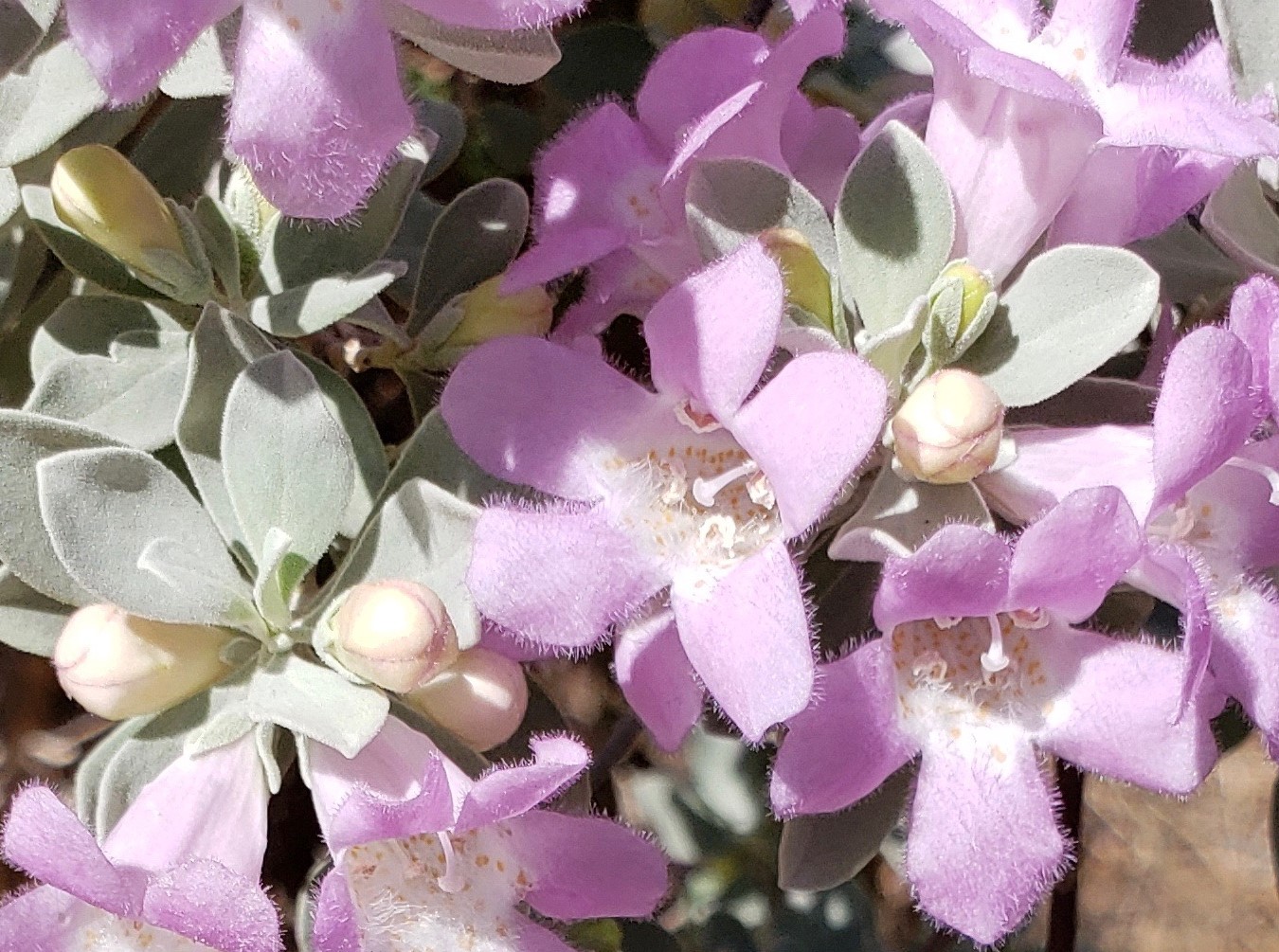
You’ll find CENIZO in local nurseries thanks to Texas horticulturist Benny Simpson and his work in getting native plants introduced to commercial production. This shrub should not be fertilized or over-watered. Plus, it’s both heat and drought tolerant. A perfect Texas native.
FUN FACT: Its purple flowers and grayish leaves inspired the common name of “Purple Sage.” And according to lore, Cenizo tends to bloom in response to heat and relative humidity conditions happening before a rainfall, giving it another common name—"Barometer Bush.”
August Highlights
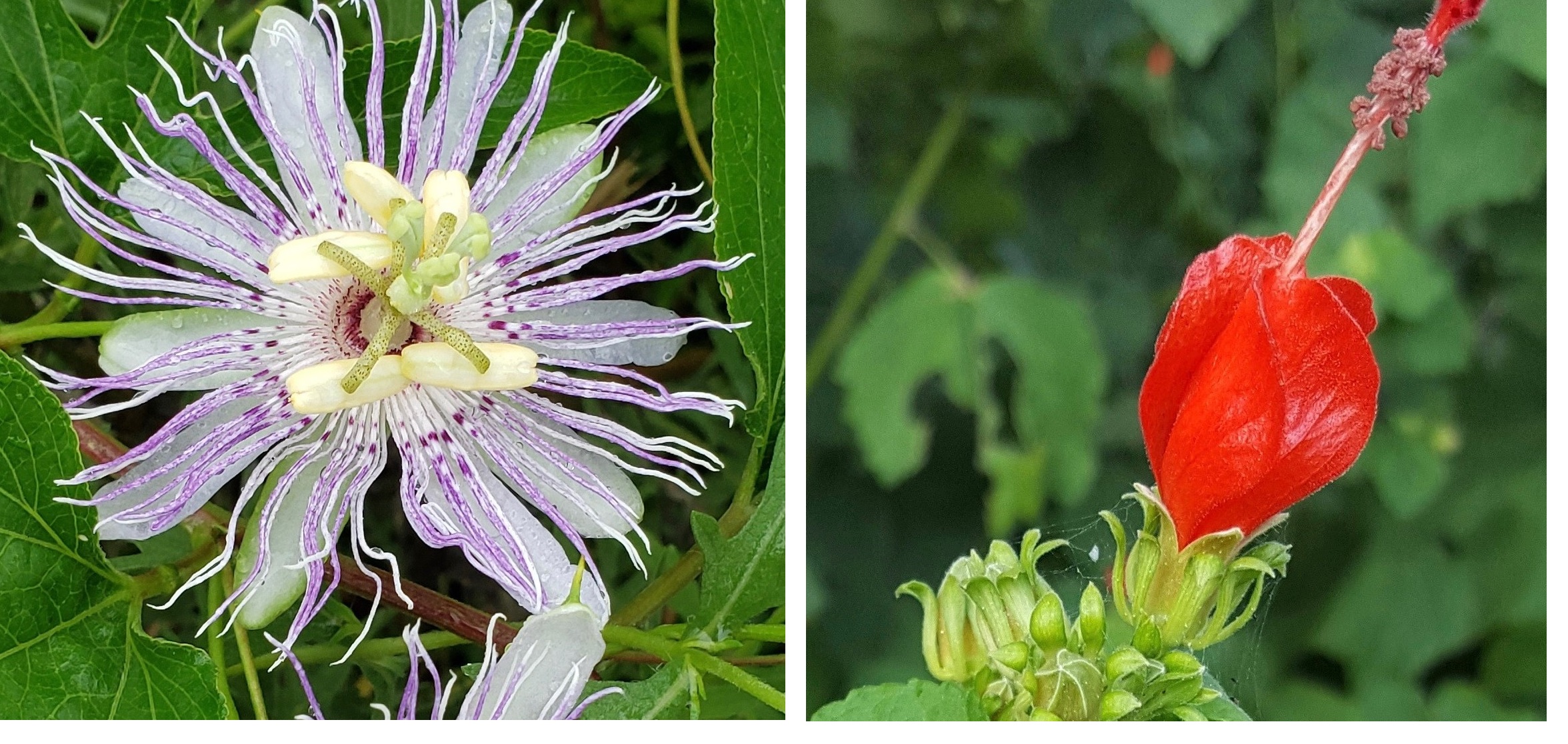
Thirty-six feet long PURPLE PASSIONFLOWER vines climb over bushes and run along the ground. It’s the larval food of the Gulf Fritillary butterfly.
Red and pink native TURK’S CAP shrubs are stunning beauties when in bloom and a favorite of hummingbirds! Blooming 3-6 feet from May-November it’s a great ornamental for both sun and shade.
FUN FACT: This plant was named for Thomas Drummond (1790-1835), a naturalist who began his collecting work in Texas in 1833. His collections of 750 species of plants and 150 specimens of birds were extensively distributed among the museums and science institutions of the world.
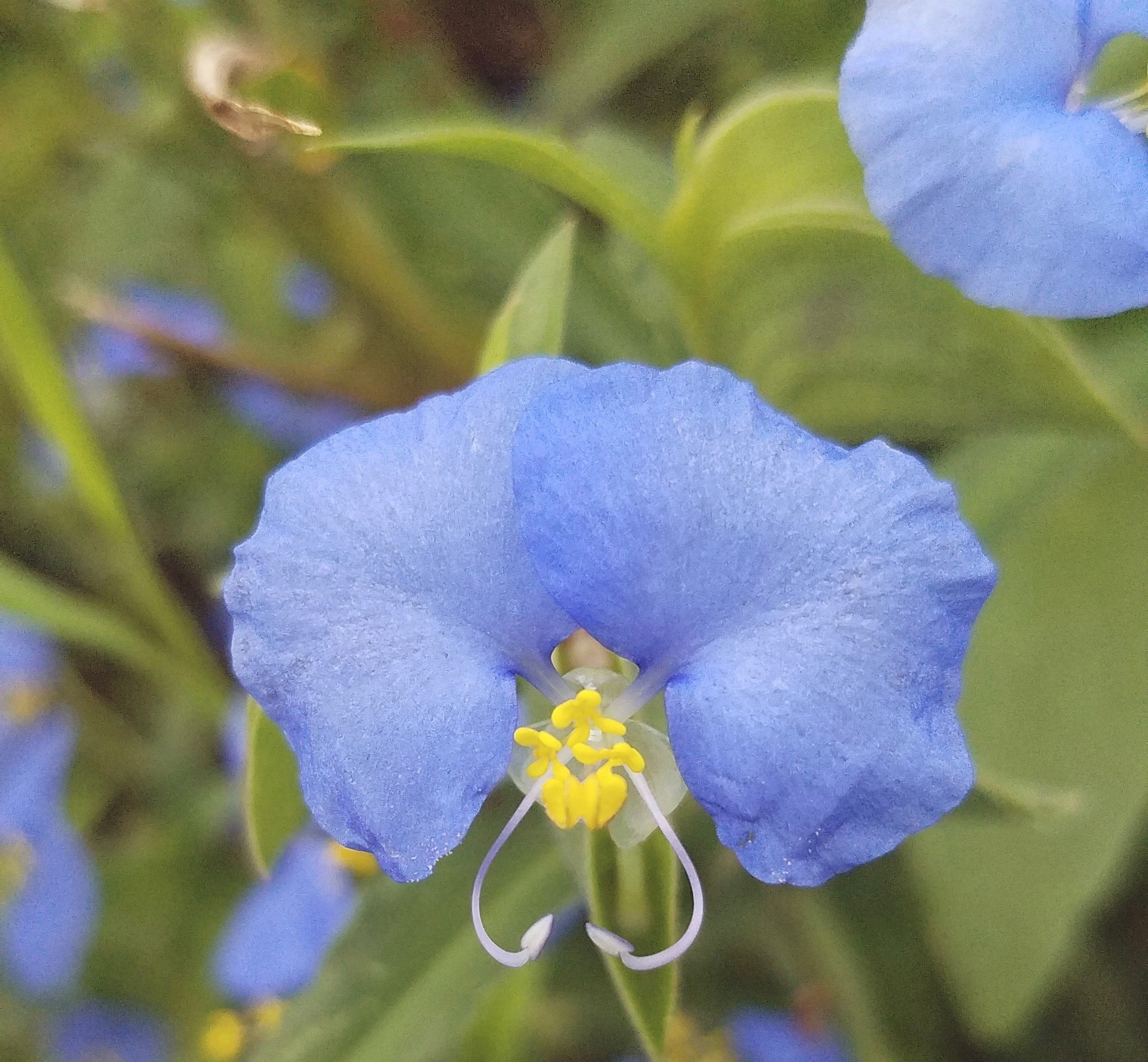
WIDOW’S TEARS is a sky-blue native dayflower (each bloom lasts only a single day). It can be seen growing throughout the park from May through October. Normally considered more of a weed than a flower, its beautiful color and the origin of its name are too good to pass up.
FUN FACT: If squeezed, the spathe (the green sac below the petals) produces a drop of liquid, hence its common name.